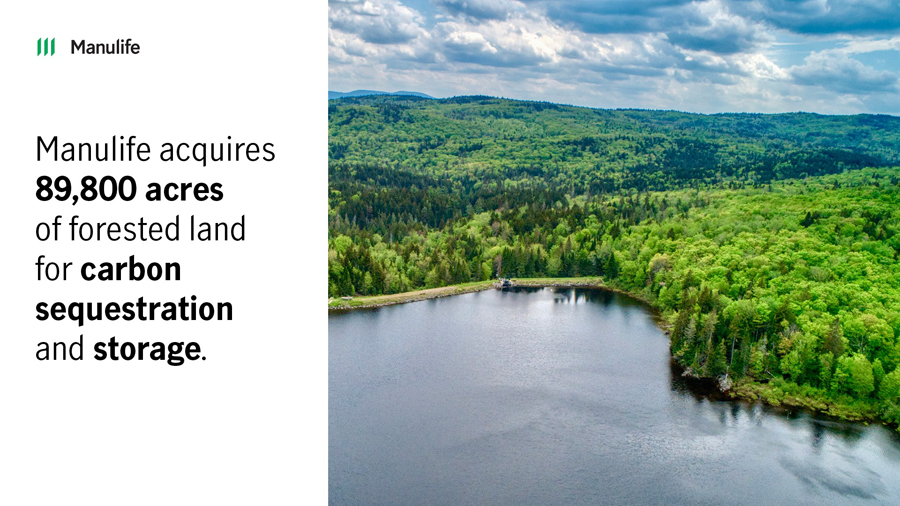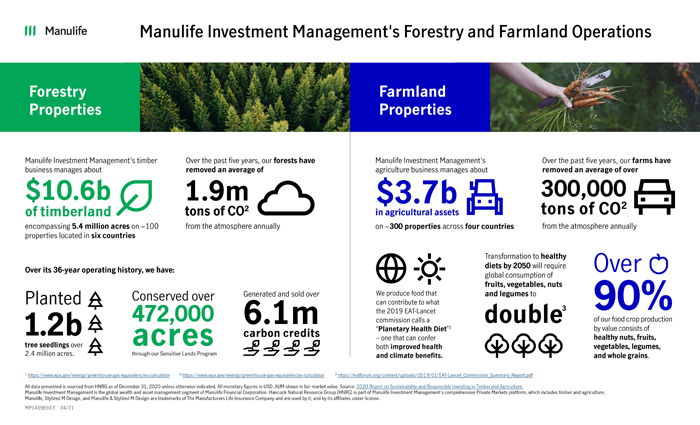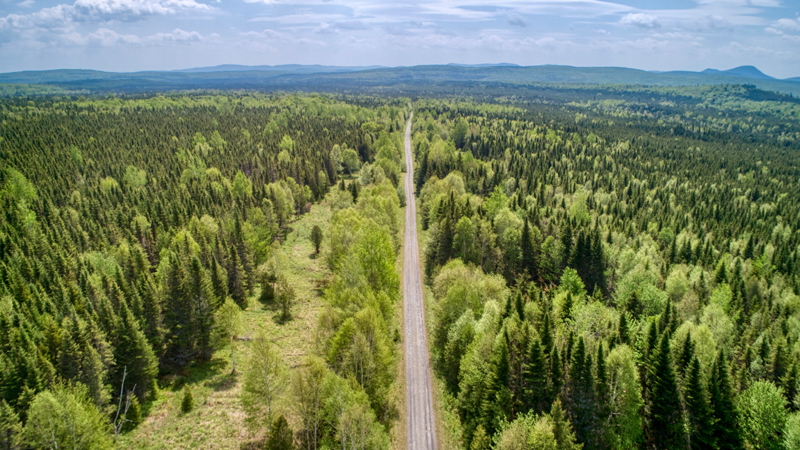Hancock Natural Resource Group, a Manulife Investment Management company, announced the acquisition of 89,800 acres of timberland in the U.S. state of Maine. The impact-first investment was made on behalf of John Hancock Life Insurance Company (U.S.A), and its parent, Manulife (collectively “Manulife”). The acquisition is an opportunity for Manulife to integrate natural climate solutions into its investment decisions and work towards its climate action plan.
This investment is classified as impact-first with the core of the investment thesis centered on the timberlands being used primarily to store carbon. Manulife reserves the option to sell the carbon credits as offsets or use the carbon removals as insets for the purpose of meeting the firm’s net zero commitments.
“We are well-positioned to seek positive climate impact and to invest in assets to create carbon sequestration and other conservation opportunities derived from forests for the benefit of our clients,” said Tom Sarno, global head of timberland investments, Manulife Investment Management. “We believe impact-first investments can meet the needs of those who are interested in offsetting carbon emissions and who may value other positive environmental or social impacts as well as generating financial returns.”
“We are pleased to have the opportunity to acquire a significant impact-first asset which continues the execution of our climate action plan we shared in May when we committed to accelerate the development of investment strategies for those interested in natural climate solutions that capture even more carbon per dollar invested,” said Sarah Chapman, global chief sustainability officer, Manulife. “We’re proud to share that Manulife is net zero in our operations due to the carbon removals from our substantial owned and operated forests and farmland outweighing emissions. We are confident this asset will continue to meet the objectives of carbon sequestration and positive climate impact for our portfolio.”
Manulife Investment Management’s global timberland and agriculture portfolios have removed an average of 2.24 million metric tons of CO2 from the atmosphere annually over the past 5 years.
“The amount of carbon a forest can store is directly proportional to the volume of timber in that forest,” added Brian Kernohan, chief sustainability officer, Private Markets, Manulife Investment Management. “Advanced light detection and ranging technology for timber volumes in our forests now allow us to measure forest carbon sequestration with improved accuracy – providing investors with even more quantifiable data for carbon storage. We are committed to the proactive management and stewardship of these timberlands to help meet both return and sustainability objectives.”
The acquired property is a contiguous block of timberlands located in Somerset County, Maine along the border of the province of Quebec, Canada with a diverse mix of naturally regenerated spruce-fir and northern hardwood tree species. It has been named “Blueback” for the highly sought-after subspecies of Arctic char native to the lakes there. A portion of the lands will also be used for sustainable stewardship practices as a working forest. Additionally, the lands are subject to a working forest conservation easement and offer unique recreation opportunities given the scenic lakes, rivers, and ecological features of the region.
Liked this post? Follow SwirlingOverCoffee on Facebook, YouTube, and Instagram.




